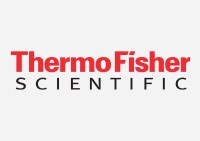Search Thermo Fisher Scientific

Microspheres
Microspheres are small spherical particles with surface modification for specialized applications, such as calibrations, labeling, flow cytometry, assaying, and more. These products are available in a range of compositions, sizes, and colors.
Products (294)
Learn More (71)
Documents & Support
(3512)294 Products
Filter
Easily perform flow cytometry, microscopy, HTS, HCS, immunoassay, and other laboratory applications using our extensive selection of FluoSpheres Carboxylate-Modified Microspheres. FluoSphere beads can be used in passive adsorption or active, covalent coupling of proteins, nucleic acids, and...
Microspheres (also called latex beads or latex particles) are spherical particles in the colloidal size range that are formed from an amorphous polymer such as polystyrene.
Minimize response of analytic systems to shape effects with Thermo Scientific™ 4000 Series Monosized Particles, excellent for use with any application that requires a NIST™ traceable size standard with a very narrow standard deviation.
Beads that each display four well-separated excitation/emission peaks
Beads that each display four well-separated excitation/emission peaks
Replace polystyrene spheres in many applications with Thermo Scientific™ 9000 Series Glass Particle Standards, dry glass NIST™-traceable size standards. Glass microspheres can be used in any application that requires a NIST™-traceable size standard with a narrow size distribution where sample...
Microspheres (also called latex beads or latex particles) are spherical particles in the colloidal size range that are formed from an amorphous polymer such as polystyrene.
Beads that each display four well-separated excitation/emission peaks
For calibration of wide field, TIRF and confocal fluorescence microscopes, especially for multicolor applications like colocalization analysis and derivation of point spread functions critical for deconvolution
Easily perform flow cytometry, microscopy, HTS, HCS, and other laboratory applications using our extensive selection of FluoSpheres Sulfate-Modified Microspheres. These microsphere beads can be used in passive adsorption or active, covalent coupling of proteins, nucleic acids, and biomolecules for...
Microspheres (also called latex beads or latex particles) are spherical particles in the colloidal size range that are formed from an amorphous polymer such as polystyrene.
Conveniently check the sizes of bacteria, viruses, ribosomes and sub-cellular components with Thermo Scientific™ 3000 Series Nanosphere™ Size Standards, excellent for use with any application that requires a NIST™ traceable size standard with a very narrow standard deviation.
Microspheres (also called latex beads or latex particles) are spherical particles in the colloidal size range that are formed from an amorphous polymer such as polystyrene.
Ensure accurate and convenient calibration of laser particle counters with Thermo Scientific™ 3K/4K Series Particle Counter Standards. Compared with our 3000 and 4000 Series products, this product line is precisely diluted for immediate use in laser particle counters with minimal time-consuming...
Meet the unique and demanding requirements of the contamination control laboratory in modern industries with Thermo Scientific™ Ezy-Cal™ Count Precision Size Standards, easy-to-use liquid particle count controls at 2000 particles per mL.
Learn More (71)
View all
Explore our “Getting Started” and “Troubleshooting” sections for solutions to top inquiries and common problems. Browse through our "Guides and Tools" section to access a comprehensive portfolio of product-related support resources., For Research Use Only. Not for use in diagnostic procedures.
Invitrogen FluoSpheres and Invitrogen TransFluoSpheres polystyrene fluorescent microspheres can be used for a wide range of applications including blood flow determination, tracing, in vivo imaging and calibration of imaging and flow cytometry instruments.
Documents & Support (3512)
View all
My FluoSpheres polystyrene microspheres are aggregating; what can I do to remedy this problem?
I accidentally froze my microspheres; can I still use them?










